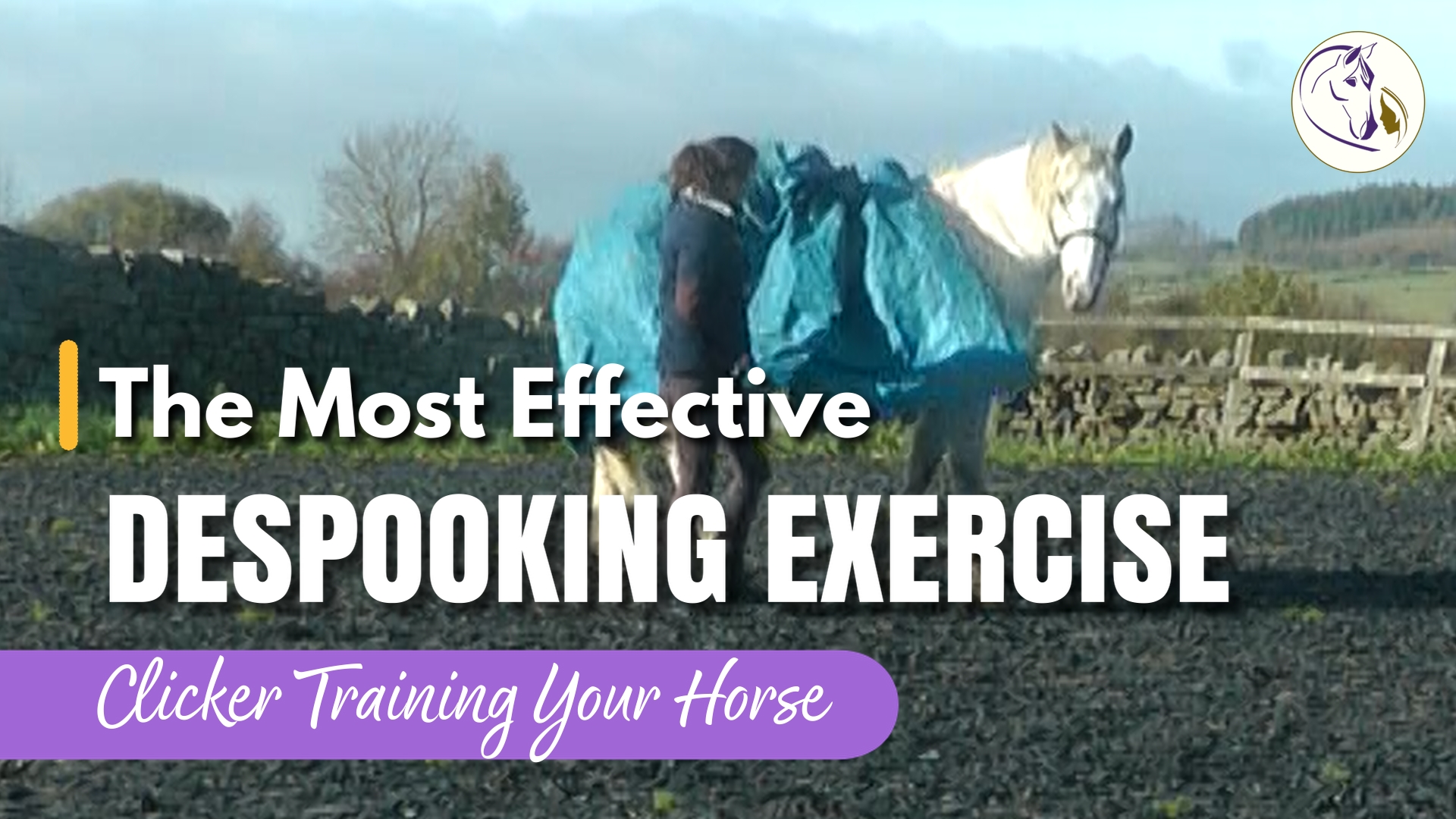How do horses communicate their preferences or willingness?
How do we make sure we’re listening and respecting them?
Consent comes down to emotions as it’s about how your horse feels about certain situations. Giving horses a voice and enabling them to communicate with us is a key part of building a great relationship and connecting with your horse. This is where using start buttons or consent cues can be an effective way to open up this communication between you.
In this video, you’ll see start buttons in action, learning what they are and how you can use them when clicker training your horse.
➣ This is a short extract from a full series of videos on Giving Horses Choice in the CT Club. They cover everything from the emotions, behaviour and importance of choice right up to limiting choice and when and how to restrict choice in your horse’s training or management.
The CT Club is an online membership site where you can get access to hundreds of step-by-step training videos on training your horse using positive reinforcement. You can find out more and sign up here We look forward to seeing you there 🙂
➤ You can also find out more in the #1 bestselling Connection Training BOOK 📖 Get it on Amazon (search for ‘Connection Training’) or download Chapter 1 free here for a preview 👀
If you enjoyed this blog, please share it with your friends using the buttons below. Tell us your thoughts, questions and experiences in the comments section and/or sign up to our mailing list below. You will receive a FREE Video Seminar on The 4 Elements of Connection Training!
☟Scroll down the page to subscribe!☟
















Hi Hannah,
first of all I want to thank you for your free content…I purchased your amazing book and it‘ s inspiring to see here more…
Watching this video I was wondering that you clicked a few times before you rewarded the horse.
I thought till this moment that giving the bridgesignal ( the click) is a promise for a reward….?!
And i had another thought that I want to share with you asking your thoughts about that:
When we reward a horse in a high rate while i.e. starting to mount a horse with mounting- issues…how can we know, that tthe horse is really feeling ok with that…how can we be sure, that the horse is supressing his emotions because its mind is so busy with seeking and getting the reward?
Thank you in advance
Myriam
Hi Myriam, thanks for your comment and questions. There are loads of different ways to use markers and rewards that have different benefits and work better in certain situations and with some horses. It’s a bit of a big question for here, but I’ll make a video on it soon. There is in-depth information on this in the CT Club though – I began learning 1 click = 1 treat and I cover in depth why I changed that, how I use markers and rewards now, what’s best to use when, how to introduce it best, when and how to change it etc etc. So if you’re a member, check it out. It’s covered in the Foundation and Training Techniques courses. Your second question about threshold is also important. Yes, you can get a horse to DO something they’re not totally relaxed with for rewards, especially if you’re using high value rewards. However, you can’t get them to do it relaxed if they’re tense about it. So, I always teach people to read their horse, prioritising relaxation and responding appropriately to any small signs of tension. I also usually recommend low value rewards for most training scenarios as well, which helps to keep things more relaxed and less about the food. It’s another big question (also covered in the CT Club in detail!) but hopefully that gives you a bit of info there. If you are in the Club, come along to the next Q&A with your Qs and we can talk about them together 🙂 Happy horse training, Hannah